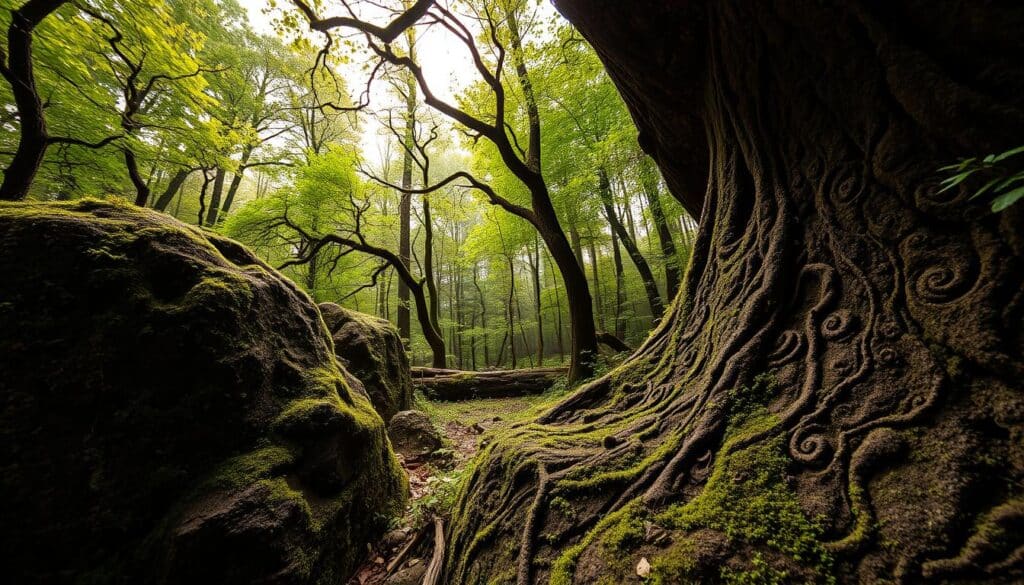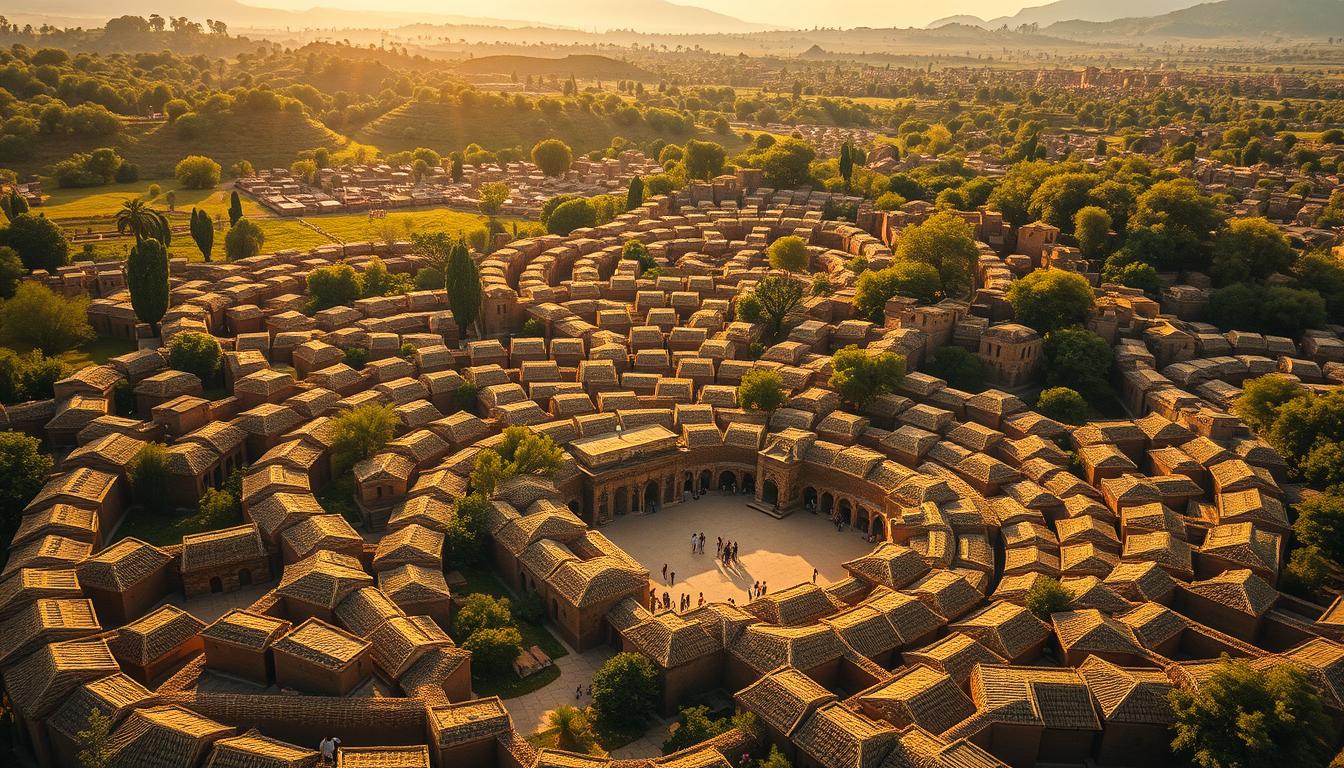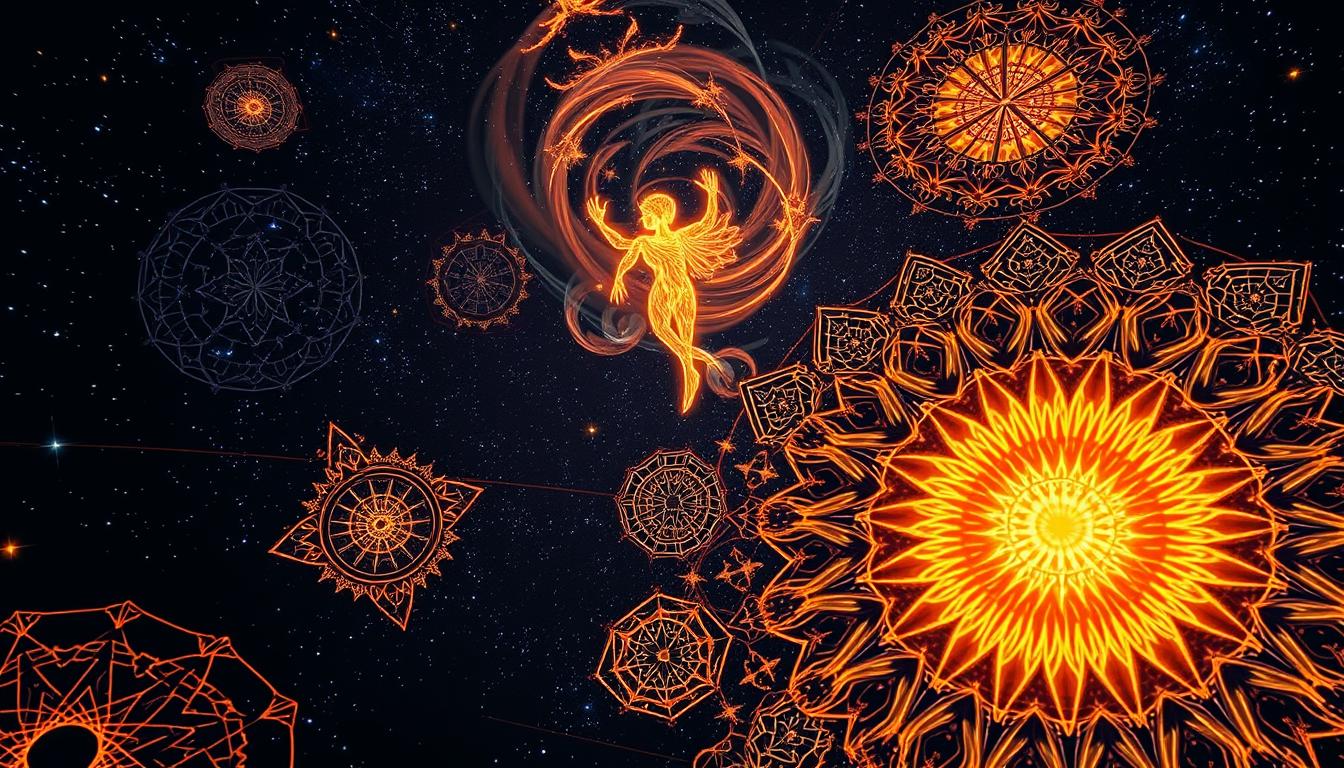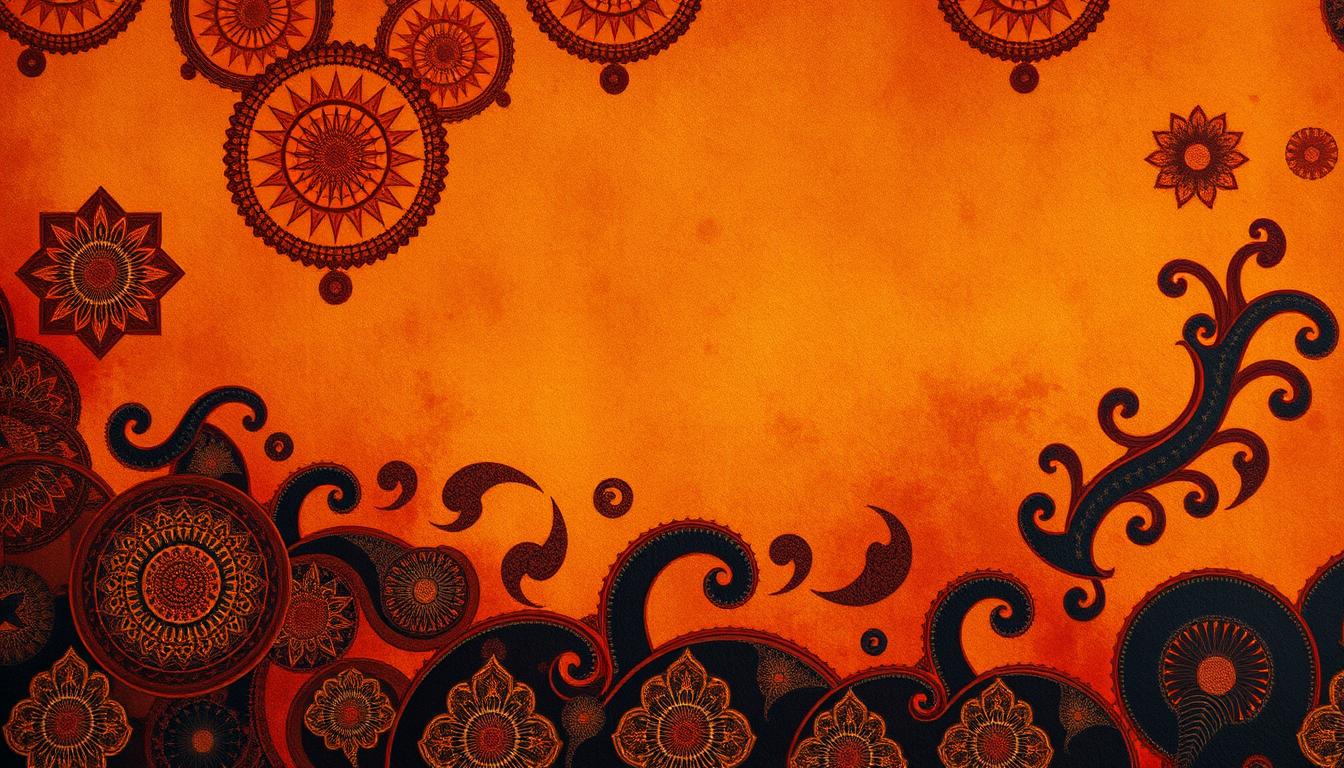Fractals are where math meets art, showing precision in nature and indigenous creations. These patterns tell important cultural stories through art. They show the beauty in repeating shapes and how nature drives our creativity. This exploration helps us see how history and surroundings affect fractal art in diverse cultures.
Introduction to Fractals in Nature
Fractals show the beauty and complexity of patterns across different places. They often repeat at many scales, showing self-organization. Benoît Mandelbrot, a leading mathematician, pushed forward our knowledge of fractals. His key book, “The Fractal Geometry of Nature,” shows the mathematical order in chaos.
Fractals take many shapes, like the rough edges of mountains, snowflake symmetry, and neuron branches. These examples help us understand the natural world better. Fractal patterns show how complex systems are connected by simple rules. This makes us appreciate nature’s design even more.

The Significance of Patterns in Indigenous Art
Indigenous art patterns are deeply meaningful in various cultures. They are an essential way of showing culture. These designs showcase a group’s identity, connecting history and spiritual beliefs. Each pattern tells a story beyond just looking nice. They help us understand a community’s traditions and what they value.
The beauty of these indigenous patterns is striking. Shapes and colors come together to speak a visual language. This language shows us about the natural world and resources near a community. Through these patterns, we see the bond between people and nature. This connection goes beyond words.
Patterns in indigenous art reflect a rich cultural history and build stronger community ties. Each design has its own meaning that is taught and shared over time. When people engage with these patterns, they relate to their heritage. This connection encourages a greater respect for their culture’s artistic heritage.
Fractals and Their Mathematical Roots
Fractals show us the beauty of math through complex designs. They are based on geometry, the key to understanding their self-replicating patterns. These patterns come to life with the help of fractal algorithms. They show us how shapes can be both endlessly complex yet mathematically precise. This blend of art and math brings out creativity that’s bound by numbers.
Fractals appear in many areas, showing how math connects different fields. They are known for:
- Self-similarity: Fractal patterns keep their look no matter the size.
- Recursion: Repeating shapes or designs within themselves.
- Scaling: Changing size without losing any detail.
Math and art mix beautifully in indigenous art, where this balance shines. The detailed work shows how geometry links to natural forms. This enriches the art for those who make and see it.
the mathematical precision of fractals in indigenous art forms
Indigenous art reveals a deep link between history, nature, and math. Early societies skillfully merged math with art, reflecting both beauty and purpose. This union of concepts shows their rich understanding of the world.
Exploring Historical Context
Long before the term ‘fractal’ existed, indigenous people globally were using these ideas. They crafted and built with a precision that mirrors nature itself. Their works show a respect for detail and harmony with the environment.
Influence of Environmental Patterns
Art was heavily inspired by the world around these cultures. Nature’s designs guided sacred art and architecture. This fusion of natural patterns and human creativity created unique cultural legacies we still admire.
Fractal Patterns in African Villages
Ron Eglash’s work shows us the unique design of African villages. He found these villages often have fractal patterns. This means their structure follows a complex mathematical model.
These patterns show the villages’ deep connection to math, which is part of their culture. It proves that people and nature in these communities live together in harmony.
Ron Eglash’s Groundbreaking Research
Eglash discovered how fractal geometry is woven into village designs. This shows how deeply math is tied to these cultures. These patterns help in managing community life effectively.
His work helps us see how traditional practices and math are closely connected. It opens our eyes to the genius of ancient architecture and social organization.
Examples of Village Layouts
Many African villages use fractal designs. You can see circles or branching patterns that help organize space wisely. These designs are not just about looks—they reflect the community’s values and needs.
This smart use of space helps villages adapt to their environment. It shows the richness and thoughtfulness of traditional African architecture.
Fractals in Native American Art
Fractals are very important in Native American art. They show complex patterns that have deep meanings and a spiritual side. Each design shows how the artist, their culture, and nature are all connected. These patterns represent their beliefs, stories, and the natural world around them.
Symbolism and Spiritual Significance
Fractals in Native American art come with a lot of symbolism in art. These patterns often reflect natural things like rivers and mountains. They show life’s repeating cycles. For many tribes, these designs are more than just for looks. They carry spiritual meanings that tie them to their past and the whole universe.
Traditional Techniques and Materials Used
Native American artists use many artistic techniques to make their fractal art. They weave, make pottery, and paint. They use traditional stuff like natural dyes and clay. This keeps their culture true and their art real.
Aesthetic Appeal of Fractals in Art
Fractals in indigenous art grab attention with complex designs and balanced patterns. These features make a special link between the art and nature. This enhances how viewers experience the art.
Fractal beauty shows up in different shapes, colors, and textures. This beauty invites us to appreciate art more deeply. The repeating patterns from nature make these arts stir our emotions. Artists use math concepts to share complex ideas in a stunning way.
In various cultures, fractals charm people in different ways. Every community uses their environment to influence their art. This shows fractals’ global presence and their power to make us admire nature’s complexity.
Walking through fractal patterns can leave viewers spellbound. They discover the math beauty behind each work. This discovery connects math and art, showing they’re deeply linked.
Impact on Modern Indigenous Artists
Today’s indigenous artists find deep inspiration in age-old fractal patterns. These patterns play a big part in their art-making. They mix their cultural roots with new art styles, showing how traditional indigenous looks fit in today’s world. They take old patterns linked to their roots and update them to talk about today’s issues.
These artists are sparking a cultural comeback by connecting the past with now. By using fractal patterns, they bring ancient symbols back in a way that matters today. This makes their art speak to people here and now.
There are many examples of this. Artists blend old ways with new stuff to make art that tells of their culture and today’s art scene. Their creations form a link, helping viewers see the richness of indigenous culture and its place in modern art.
Exploration of Fractals in Exhibit Spaces
Fractals are now key in many new exhibitions. They mix interactive art with learning in a way that draws people in. At these exhibits, people can see the beautiful complexity of fractals and how they link to art. Adding technology makes the experience more engaging and fun to learn.
Case Studies: Interactive Exhibitions
Many exhibits have put the spotlight on fractals in interesting ways. For instance, the “Fractals in Nature” exhibit at the Science Museum has hands-on stuff. There, people can change fractal patterns themselves. Another exhibit, “Art and Mathematics,” shows fractal use by indigenous artists. It helps visitors see the importance of these patterns in cultures.
- The “Fractals: Endless Patterns” exhibit at a local art gallery encourages participation through digital screens that let users create their own fractal designs.
- The “Interactive Fractals” exhibit at a science fair combines visual art with mathematical concepts, offering workshops that deepen understanding through collaborative projects.
Visitor Engagement and Educational Value
Interactive art makes learning way better, especially with cool topics like fractals. Through tours and hands-on spots, visitors learn about math in art. This way of teaching not only gives knowledge but also makes people more interested in nature. It helps link art, science, and culture more closely.
Conclusion
The study of fractals in native art has been eye-opening. It shows a strong link between math and culture. This overview points out the way that native artists use fractal patterns. They don’t just show art. They also share deeper meanings about who they are and the world around them. The unique use of fractal geometry in their art highlights a mix of creativity and accuracy. It shows the beauty found in traditional ways.
Looking into the cultural meaning of these patterns shows their deep connection to history, spirituality, and community values. The complex designs create a conversation that lasts through time. They highlight a shared history and push for new interpretations. It’s important to keep exploring this area. We should look more into it and find more ways to share these stories.
In short, fractals and native art coming together open doors for both new art and research. Acknowledging their role lets us see how art and math come together. This shapes our view of different cultures. Keeping this conversation going is key. It helps save and share the deep meanings that fractals have in indigenous art.



